We bought our beloved 2006 Com-Pac Sun Cat, Wily Conch, back in 2009 and have enjoyed owning her very much. At right is one of my favorite moments, sailing in the 2013 Sun Cat National Championship Regatta with my friend, Pete.
While working as a salesman at Gulf Island Sails, I sold this boat to the original owner in late 2005. A couple of the pictures and one of the videos on the linked dealership page feature this particular boat. Because that buyer had no tow vehicle, part of our deal was that I would launch and recover the boat when he asked and would store the trailer at my property. The original owner is a snowbird and kept the boat in the water at his condo while he was in Florida. When he flew north, the boat came to my place and lived under a canvas cover. The trailer has never had salt on it for very long because I am the only person who has ever used it and I can't stand salt on trailers.
In late 2009, I did some modifications to the rigging which I got around to describing on this site in 2010.
I got tired of using the canvas cover that came with the boat and gave it to another Sun Cat owner when I installed a shade tent for the Sun Cat.
In 2011, I replaced the trailer wheel bearings, keel rollers, and bunks. I have pictures of that procedure but never got around to writing it up here.
In a 2010 discussion on the Trailer Sailor Catboat Forum, we were joking around about the number of Sun Cats sailing on Charlotte Harbor and that joke somehow grew into the great sailing tradition known as the Sun Cat National Championship Regatta. Since it was mostly my joke, I became the Head Jib Trimmer In Charge and hosted the Sun Cat Class racers each year from 2010-2014. I also made up the class rule, which states that you must sail a hull that is arguably a Sun Cat hull. This class rule was intended to include the classic Sun Cats built in the 1970's and 1980's and also to allow any modification owners wished to make to their boats. A couple of owners just HAD to ruin my "Jib Trimmer" joke by actually putting a jib on their Sun Cats but only one of those boats raced in the Nationals. Over the 5 year history of these great races, we have learned that no performance modification can overcome the advantage of having a dark blue hull. The blue ones are simply faster and a blue boat has won every year. We don't know why and no one really cares. If you're a person who cares about such things, Sun Cat Class racing may not be for you. Our main rule is to have fun! But for anyone who wants to own a proven performer, the three-time National Championship-winning Wily Conch is now for sale.
I should probably note that the other two Sun Cat National Championship titles went to Suitsus, which was modified with a 180 sq ft sail that was later sold to the owner of a Sun Cat with a white hull named Indy Anna. With an extra 30 sq ft of sail area, there's a good chance that Indy Anna is now the fastest Sun Cat, but we have not had a racing series to determine whether the extra sail area will actually work without the advantage of a blue hull.
Wily Conch is a 2006 model Sun Cat, originally built and sold in 2005. Factory and dealership-installed options include the speedy blue hull color, 5 hp Tohatsu with 20" shaft, blue Bimini top with cover, teak cockpit sole grate, cockpit cushions, SS transom boarding ladder, fabric interior cushions, lighted Danforth bulkhead compass, navigation lights and cabin light, 12 volt power outlet, epoxy coat anti-fouling paint, anchor roller, masthead Windex wind direction indicator, and Performance galvanized trailer. The previous owner also bought a really nice stainless Lewmar 11 lb Claw (Bruce type) anchor. I added guide posts to the trailer and put the trailer lights on top of the posts so that they are never submerged.
All of the pictures that follow were taken on September 26, 2015 and show the current condition of the boat.
The port side of the boat faced east when the previous owner had it at his condominium dock and shows some fading if you look closely but through the magic of PoliGlow it looks pretty good. Performance does not seem to have been affected.
The starboard side was against the condo dock and got a few scratches when the fender slipped out of position. Because that was the shady side, the hull is not faded. The fading and scratches are negligible and difficult to see unless up close. I mention them here because I have learned that people don't like to be surprised by such things when going to see a boat.

The Bimini top can be put up with the sail down as long as the forward end of the boom is pinned at the mast hinge level using the infamous long pin. It's infamous because many owners can't figure out what purpose it serves and there has been quite a bit of discussion about it on the Trailer Sailor Catboat Forum over the years. My answer: whatever purpose I want it to serve! My custom trailer lights on the guide posts interfere with the Bimini (and also drag the license plate along the cabin top) which is why they are rotated backwards and sticking out in this picture.
The electropolished stainless steel Lewmar 11 lb Claw anchor is a Bruce clone and holds well with short scope. It also sheds mud easily. I use a twisted SS shackle over the anchor roller bail to make sure it does not deploy itself at unintended times. It has fairly light plastic-coated chain that I never got around to replacing with heavier chain and nylon rode. Like every other part of all of my boats, I never put it away with salt or water on it.

The teak cockpit grate has lived an indoor life except when the boat is in use. That was the policy of the previous owner too, and he was the last one to refinish it. It still looks pretty good and would be a lot of trouble to strip and refinish so I am selling it as is.
The grate and the closed-cell foam cushions were fairly expensive options when I sold this boat to the original owner, adding about $2,000 to the price tag. I told him that I would use Dri-Deck or some similar product to make my own grate and would buy some throwable cushions for comfort. Fortunately, he did not listen to me. He wanted the nice stuff! Working on commission, I did not argue the point. I have been thankful that he made that choice. The cushions are really nice and the grate is not only attractive but functional. The centerboard pennant tube tends to bubble up some water on some points of sail, especially if the boat is heavily loaded. I have sailed Sun Cats without the grate and the cockpit sole is a wet place. With the grate in place, the water runs off under the grate and things like towels, shirts, hats, or whatever may land on the sole stay dry. Also, any dirt that is tracked aboard tends to fall through the grate instead of being tracked around the boat.
The teak boards that cover the fuel tank locker at the aft end of the cockpit are virtually never out of storage because I like to be able to put my shoes in there without removing the boards. Those were also last refinished by the previous owner and they look new. I just stripped and refinished the teak slats on the cockpit locker lids using Cetol Natural Teak with Cetol Gloss on top. This is a 2006 model so it has mid-boom sheeting and a traveler on the bridge deck, shown at the right side of the picture. The black thing on the starboard side of the cockpit is the cover over the manual bilge pump.
I puzzled over the problem of where drink holders should be mounted in a Sun Cat for a while before coming up with this solution. I did not want to put them in a place where people might want to lean back nor where they might be kicked. There is just barely enough space for them to swing freely and I have not kicked one yet.

The companionway hatch boards are plywood with teak veneer. The original ones were looking a bit rough when the previous owner put the boat up for sale so he bought new ones. I still have the old ones, which will be included with the boat. The cabin windows and forward hatch all have screens and for overnighting I would cut holes in the old hatch boards and install screens, but we don't overnight on the boat.
I sealed the edges of these new hatch boards with epoxy and then finished them with Cetol Natural Teak and Gloss, then put them in storage. They still look great. The rest of the exterior teak pieces on the boat were just stripped, sanded, and finished with the same Cetol products.
Also visible in this picture are the throat and peak halyards, both led to Spinlock stoppers. The blue line coiled around the outboard cleat is the gaff boom downhaul. It has a colorful, sailorly name but I won't mention it because I try to keep this site family-friendly. The name is what you would yell at the gaff boom if you wanted it down and it was stuck and your grandmother was not listening.
The picture at left shows why the companionway boards still look so good after being refinished several years ago. I made companionway boards out of some Starboard that I salvaged off a Cougar catamaran that was destroyed by hurricane Charlie. They look terrible but are for storage, not show. On the bright side, they look exactly the same as they did when I cut them out years ago.

A couple more pictures showing cockpit details: the Danforth bulkhead-mounted compass has a red light that is wired to the boat's navigation light circuit. It also has a plastic cover that is in place unless the boat is in use, which is why it still looks new after almost ten years. The compass features an inclinometer that reads up to 30 degrees of heel. If your Sun Cat is heeling that much or more, you're doing something terribly wrong.
After cleaning out the cockpit lockers, I tested the manual bilge pump, which still works fine. It does not quite remove all of the water from the bilge so I soaked up the remaining water with a towel and let it air dry. I like a dry bilge.
A couple of years ago, I returned from a New Year's Day sail and found an alarming amount of water in the bilge, which had always been dry. I cleaned and rebedded the cockpit drain covers and centerboard pennant tube block, though dust down below told me they were not the problem. The leak occurred where the port drain tube goes through the transom. It is a PVC tube fiberglassed into the transom. I ground out a small area around the drain tube exits, filled the area with stick epoxy, then rebedded the "flapper" type covers that reduce back-flow in following seas. There have been no leaks since that time.

The boom gallows teak was just refinished with Cetol Natural Teak and Gloss. I keep an old towel folded over the gallows to prevent scratches from the mast and boom. The tiller is the only wooden part that got polyurethane varnish during the recent stripping/refinishing operation. I think I put ten coats but lost count at some point along the way. The picture at right also shows how the Bimini top stays out of the way when down and covered.
The transom shot at left shows the fuzzy carpet I used to wrap the "goal posts" on the trailer. The goal posts make loading the boat onto the trailer much easier, especially if doing it alone in a crosswind. The fuzz and the somewhat flexible PVC pipes ensure that the boat won't get any new scratches from a sloppy approach.
Because trailer lights depend on the trailer frame to provide a ground connection and PVC is not a conductor, I sacrificed a 50' extension cord to wire them. The only part of the trailer light system that gets wet during launching or recovery is the external insulation on the extension cord. In addition to making the trailer lights more visible, putting them up high has eliminated any corrosion problems caused by submerging electrical parts in salt water. It is necessary to release the bolts that hold the PVC pipes and rotate the trailer lights 180 degrees before launching/recovery because otherwise the license plate drags along the cabin top. Fortunately, this lesson was learned without any resulting damage.

Sun Cats have interior storage underneath both berths and underneath the companionway step. I took the picture at left with lids removed to show it. Also shown is the teak and sandy cabin sole. I did not want to leave the sole unfinished for fear that something would be spilled on it and stain the veneer. I wanted to be able to wipe up any spills quickly, which meant varnishing the surface. I also did not want to slip on it, meaning some kind of non-skid was needed. My solution to this problem was to embed sand in the varnish over the Holly strips. This muted their bright color somewhat but accomplished the desired result. The sole edges were sealed with epoxy prior to varnishing so getting it wet or spilling something on it is not a problem.
The battery lives in the forward storage area and there is a partial bulkhead separating that storage compartment from the anchor rode storage area.
My recollection is that Com-Pac stopped using the teak slats on the interior liner and went to plywood starting with the 2008 models. That was also when they eliminated the bridgedeck traveler and moved the sheet to the end of the boom. I liked the older boats like ours better.

The companionway step has teak slats to provide traction. There are also a couple of taller pieces of teak that do a great job of keeping a small cooler from sliding around. The storage areas under the berths have plywood covers that are unfinished.
The fabric interior cushions have only been on the boat a few times. They have spent most of their lives inside air-conditioned homes and look brand new. The cushions are 7 feet long and because catboats have a wide beam all the way forward it is easy for two people to sleep in more comfort than most 17' boats would allow. The 12 volt outlet in the forward bulkhead and the overhead cabin light mounted just under the round portlight window make it this a nice place to read a book or use a laptop computer.

Despite the long berth cushions, there is a small amount of space aft of each cushion to keep some personal stuff at hand without having to dig into a locker to get it. The two little boxes are stuck to the bulkhead with suction cups and provide a convenient place to keep sunglasses, sunscreen, phones, or other small objects. This picture also shows that the bulkhead compass sticks through into the cabin side of the interior liner a bit. One of my projects-in-waiting that never got done was to hide this with a small teak trim box.
The fuse panel switches have lights to show which ones are on at a glance. The standard set of labels show an electric bilge pump but none has ever been installed in the boat so the "Bilge Pump" and "Aux 2" switches are not connected to anything. The "Aux 1" switch controls power to the 12 volt outlet mounted next to the panel.

One more exterior picture taken from the starboard side in front of the boat, just because Sun Cats are so darn cute from this angle. In the background just forward of the bow you can see the shade tent with mesh side curtains that protects this boat from sun and rain when it is not in use.
And one final shot in road-ready mode with the mast down. My favorite aspect of the Sun Cat is the ease of raising and lowering the mast and the fact that almost nothing else needs to be done to prepare the boat to sail. My personal record is 39 seconds to accomplish this, but I was unaware that I was being timed and I'm sure I could trim a few seconds off it. Most of our time at the ramp is taken up by mounting the Windex, removing the sail cover, and removing the trailering strap. Parking the truck is generally the part that takes the most time. It is possible to pull up to the boat ramp and be under way within 5 minutes if you hurry, though we usually take about 10 minutes. I also put the mast up before cleaning the boat just to get mast and rigging out of my way.
Working at a brokerage/dealership that specialized in trailerable sailboats, I got the opportunity to make a lot of masts go up and down. The Com-Pac Mastendr™ system really sets these boats apart from all others. In practice, the difference between a boat that takes over half an hour to rig and a Com-Pac catboat is that you can take the catboat for an afternoon sail if you have only a couple of hours of free time. In most trailerable sailboats, it just would not be worth it because you wind up spending more time at the boat ramp than on the water. That's why we bought the Sun Cat and why I will be sorry to see her go. I only hope the next owner has as much fun as we have with this boat.
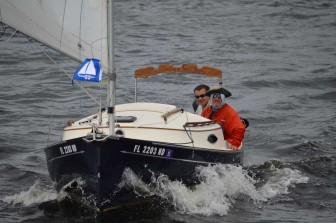
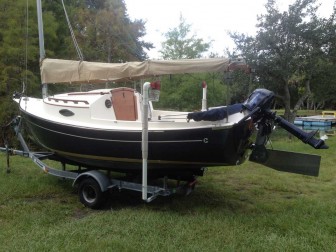
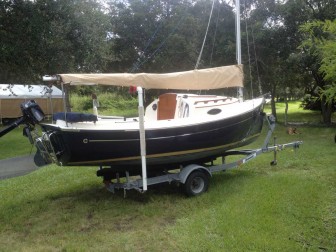
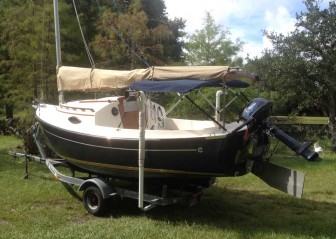
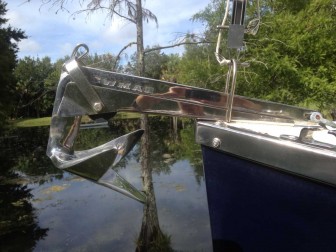
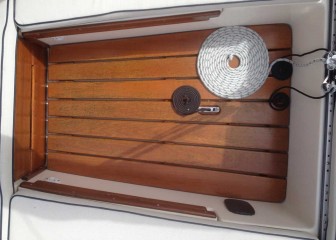
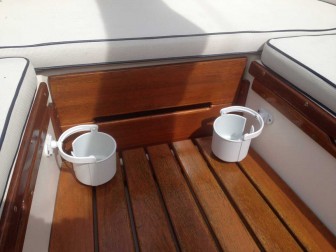
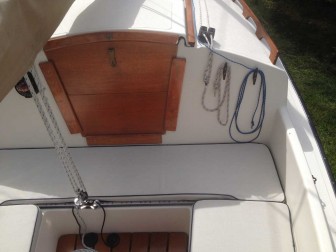
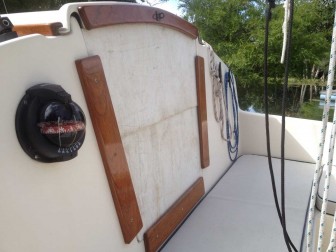
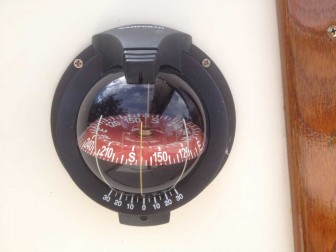
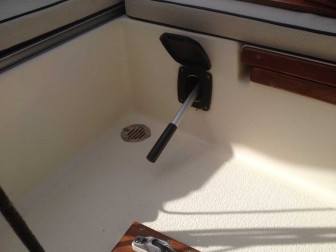
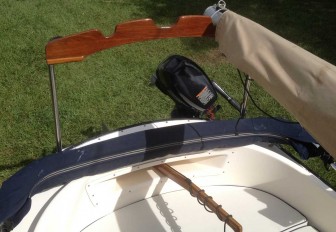
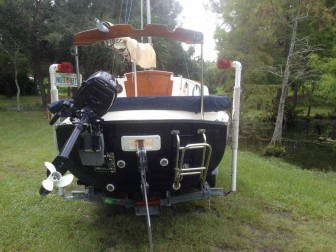
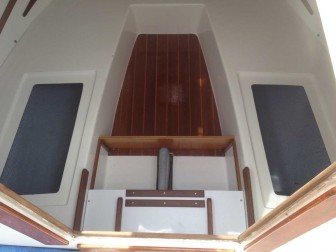
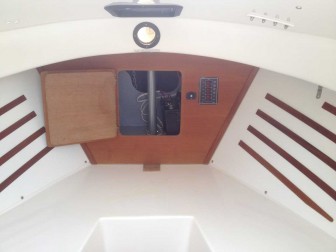
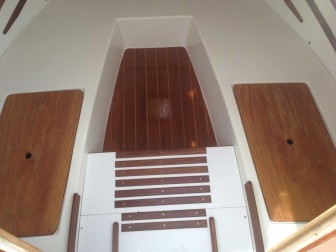
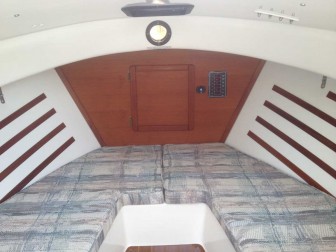
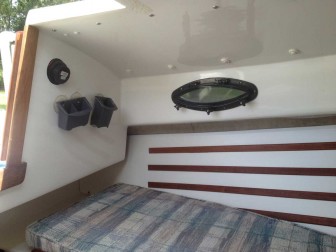
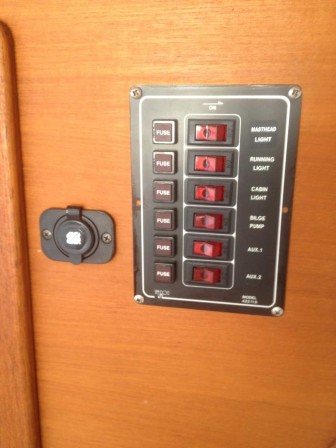
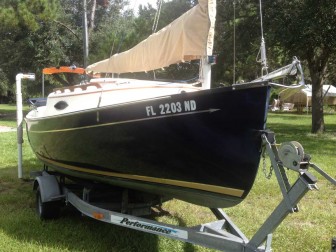
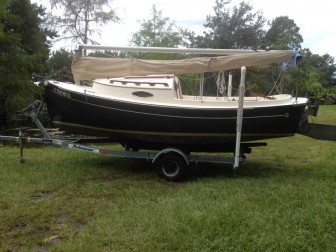
Leave a Reply
You must be logged in to post a comment.